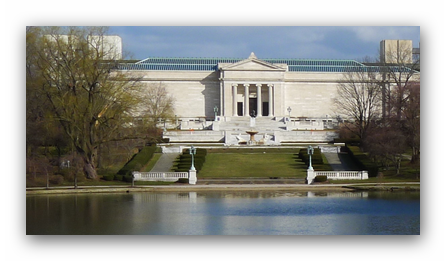Oct 9 2016 - Feb 26 2017
Cleveland, OH
The most complete surviving example of a Gothic table fountain is preserved in the Cleveland Museum of Art. This medieval automaton is datable to about 1320–40 and was likely produced in Paris for a person of high status, perhaps a member of the royal court. The Cleveland fountain is internationally recognized as a unique example of a genre now understood primarily through documentary sources. Such fountains existed in the 14th and 15th centuries in substantial numbers. They assumed various forms but were always made from precious metals and sometimes embellished with colorful enamels or semi-precious stones. Table fountains were probably returned to the goldsmith’s shop for conversion into vessels or coinage once they ceased to function or the fashion had passed, accounting for the scarcity of surviving examples today.
Impressive in their sheer technical wizardry, these mechanical devices with moving parts that spouted (sometimes perfumed) water are known especially from inventories. Once thought to grace banqueting tables, they were more likely placed on pedestals in strategic locations in palaces, where they were showcased as spectacles of ingenuity by their owners to delight their guests. Such objects did not originate in the European West, but were probably introduced through the Byzantine and Islamic worlds.
Conceptually and stylistically, the Cleveland table fountain is stunning piece of Gothic architecture in miniature, with parapets, arcades, vaults, pinnacles, columns, and arches with tracery. The goldsmith responsible for this object was unquestionably inspired by the great Gothic buildings of his time. The Cleveland table fountain is a three-tiered assembly featuring cast and chased elements to which were attached a series of enamel plaques representing grotesque figures, some of which play musical instruments. Water wheels and bells were added to capture motion and sound. The rich detail and ornamentation of this object suggest it would have been expensive to produce and highly treasured by its original owner.
This exhibition will, for the first time, present this unique and special object as the focus of a single study. The table fountain will be placed at the center of a group of objects including luxury silver, hand-washing vessels, enamels, illuminated manuscripts, and a painting. Each will inform some aspect of the fountain’s history, functionality, presumed use and context, materials, technique, dating, and style.
Credit: Exhibition overview from museum website.
Whether you go or not, the companion publication, Myth and Mystique: Cleveland’s Gothic Table Fountain, reassesses this extraordinary piece in the context of other similar luxury objects, analysing specifically the fountain's history, functionality, materials, and style. The Cleveland Museum of Art's medieval table fountain, c. 1320–40, is the only version of its kind to have survived in its complete form from the Middle Ages. A superb example of French Gothic gold-smithing, it is an exquisite metalwork structure and a unique example of courtly taste and princely fashion, which was designed not for any religious purpose but purely as an indulgence. Its uncertain provenance has added to its charm.
Exhibition Venues & Dates
Oct 9 2016 - Feb 26 2017
Cleveland, OH

